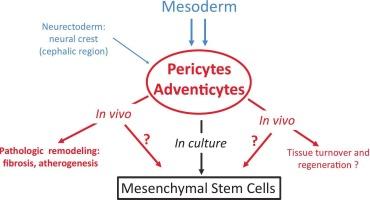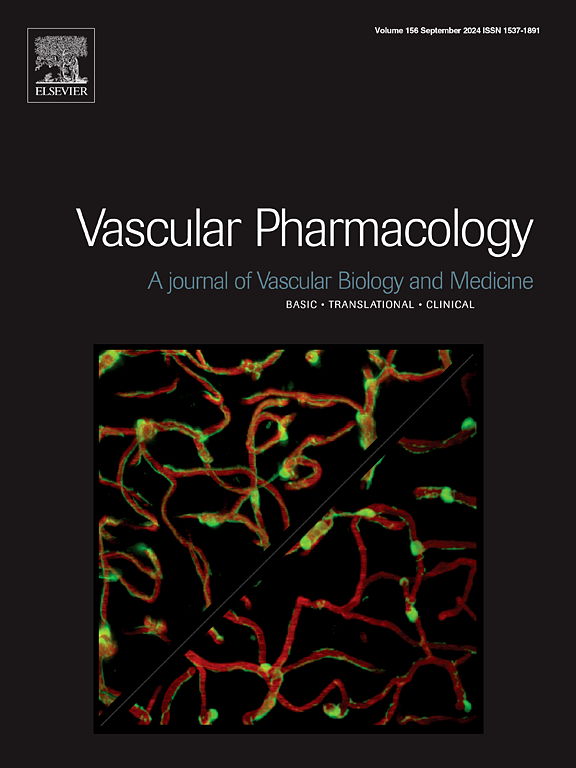Mesenchymal progenitor cells in perivascular niches: forerunners of mesenchymal stem cells and players in tissue scarring and regeneration
IF 3.5
3区 医学
Q2 PHARMACOLOGY & PHARMACY
引用次数: 0
Abstract
The walls of all embryonic, foetal, and adult blood vessels contain mesodermal progenitors, distributed as pericytes in capillaries and micro vessels, and fibroblastic cells in the tunica adventitia of larger veins and arteries. Following dissociation, selection by flow cytometry, and culture, those perivascular cells turn into bona fide mesenchymal stem cells of which they possess all attributes. In vivo, the adventitial cellular niche supports several spatially-organized subsets of mesodermal progenitors biased toward either osteo-, adipo-, or fibrogenesis, and dominated by more primitive, multi-lineage stem-like cells. Experiments in reporter mice have shown that perivascular progenitor cells play roles in tissue scarring, turnover, and regeneration, but also in pathologic fibrosis and vascular remodelling. This review briefly summarizes the phenotypes, anatomical distribution, and developmental capacities of perivascular mesenchymal progenitor cells, underlining the potential interest thereof for cell therapies, tissue engineering, and disease prediction.

血管周围壁龛中的间充质祖细胞:间充质干细胞的前体和组织瘢痕形成和再生的参与者。
所有胚胎、胎儿和成人血管的壁上都含有中胚层祖细胞,它们以周细胞的形式分布在毛细血管和微血管中,而成纤维细胞则分布在大静脉和动脉的外膜中。经过分离、流式细胞术选择和培养,这些血管周围细胞变成真正的间充质干细胞,它们具有所有的属性。在体内,外基质细胞生态位支持几种空间组织的中胚层祖细胞亚群,这些亚群倾向于成骨、脂肪或纤维形成,并由更原始的多系干细胞样细胞主导。报告小鼠的实验表明,血管周围祖细胞在组织瘢痕、周转和再生中发挥作用,但也在病理性纤维化和血管重塑中发挥作用。本文简要综述了血管周围间充质祖细胞的表型、解剖分布和发育能力,强调了其在细胞治疗、组织工程和疾病预测方面的潜在兴趣。
本文章由计算机程序翻译,如有差异,请以英文原文为准。
求助全文
约1分钟内获得全文
求助全文
来源期刊

Vascular pharmacology
医学-药学
CiteScore
6.60
自引率
2.50%
发文量
153
审稿时长
31 days
期刊介绍:
Vascular Pharmacology publishes papers, which contains results of all aspects of biology and pharmacology of the vascular system.
Papers are encouraged in basic, translational and clinical aspects of Vascular Biology and Pharmacology, utilizing approaches ranging from molecular biology to integrative physiology. All papers are in English.
The Journal publishes review articles which include vascular aspects of thrombosis, inflammation, cell signalling, atherosclerosis, and lipid metabolism.
 求助内容:
求助内容: 应助结果提醒方式:
应助结果提醒方式:


